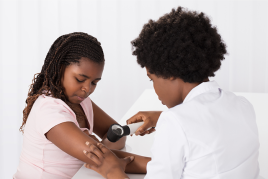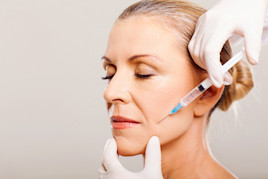Nail fungus: Overview
What is nail fungus?
It’s easy to get a fungal nail infection. If you have a fungal infection on your foot, the fungus can spread to one or more of your nails. This is quite common.
You can also catch a fungal nail infection in a warm, moist place such as a pool deck or locker room. If someone else has a fungal infection and walked barefoot there, all you have to do is walk barefoot in the same area.
Having wet nails for a long time can also lead to nail fungus. Some people develop it when they wear the same pair of sweaty shoes or boots every day. Fingernails that are wet for hours at a time due to a job or hobby are also susceptible.
What you see on infected nails will vary with the type of fungus causing the infection.
Nail changes
Nail fungus causes changes to the infected nails. You may see white spots or a change in the nail’s color. Other signs include debris under the nail and thickening nails.

Most people see some nail discoloration. The nail may have a white spot. Some nails turn yellow, brown, or green. As the infection worsens, infected nails can thicken, lift up from the finger or toe, or crumble. Some nails become thinner.
Treatment is important
Treatment can prevent the infection from causing more damage to your nails.
If you have diabetes or a weakened immune system, treatment is especially important. After getting a fungal nail infection, people who have diabetes have an increased risk of developing sores that do not heal. Sores that do not heal can lead to a serious health problem. It’s important to see a dermatologist (or other doctor) at the first sign of a nail problem. A dermatologist can tell you whether you have a nail infection or something else.
Early diagnosis and treatment are recommended for everyone who has nail fungus. Caught early and treated, a fungal nail infection is likely to clear and you’ll regrow a healthy nail.
Treatment can also prevent the fungus from spreading to other parts of your body and to other people.
Don't cover it up
You cannot get rid of a nail infection by covering it with nail polish or artificial nails.
Image
References
Gold LFS and Rosen T. “Onychomycosis: Diagnosis, treatment, and prevention strategies.” Dermatology News (A CME/CE certified supplement). March 2016:2-15.
Verma S and Heffernan MP. “Onychomycosis.” In: Wolff K, Goldsmith LA, et al. Fitzpatrick’s Dermatology in General Medicine (seventh edition). McGraw Hill Medical, New York, 2008: 1817-20.
 Molluscum contagiosum: How to safely treat it
Molluscum contagiosum: How to safely treat it
 Biosimilars: 14 FAQs
Biosimilars: 14 FAQs
 Practice Safe Sun
Practice Safe Sun
 Relieve uncontrollably itchy skin
Relieve uncontrollably itchy skin
 Fade dark spots
Fade dark spots
 Untreatable razor bumps or acne?
Untreatable razor bumps or acne?
 Laser hair removal
Laser hair removal
 Scar treatment
Scar treatment
 Botox
Botox
 Free materials to help raise skin cancer awareness
Free materials to help raise skin cancer awareness
 Dermatologist-approved lesson plans, activities you can use
Dermatologist-approved lesson plans, activities you can use
 Find a Dermatologist
Find a Dermatologist
 What is a dermatologist?
What is a dermatologist?